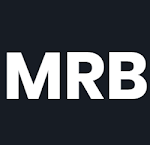The canonical tag or canonical tag has a simple objective: in case of duplicate content, it indicates which is the main one for search engines. The function is useful when the pages are slightly different from each other.
Those who work with digital marketing often need to know some technical concepts that seem complicated. This is most evident in areas like SEO, where there are a number of details that make a difference.
A very important element for Google is the canonical tag. Knowing more about your app can make a big difference in the volume of traffic your business attracts through organic search.
What is and how to use the canonical tag
The name may suggest that it is something complicated, but the purpose of a canonical tag is simple: in case of duplicate content, the canonical tag indicates the main one to search engines.
At first it may seem similar to redirects. However, in the case of the canonical tag, search engines only attribute authority to the preferred page if they really understand that it is a similar version and if the use of the tag makes sense.
The code that must be inserted in the minor versions of the page, within the <head> section, is the following:
<link rel=»canonical» href=»http://www.misitio.com.mx» />
Another difference is that pages with canonical tags are accessible to the user, contrary to redirection, where the user can only access the directed page.
A common use case is when you use landing page creation software , like RD Station Marketing, where you can work with one landing page for each campaign, be it paid ads or social media. Since the pages are probably very similar, but with different URLs, you can define one as the main one, and use the canonical tag to point to all the others.
With this action, the search engines understand that this is just a version of the other page and end up transferring authority to the front page.
Some digital marketing tools manage to make this link in a simple way. See the following example of a Landing Pages setup screen in RD Station Marketing.
Many developers or plugins configure the site to use self canonical, in which each page, when it does not include a specific canonical tag for its main version, points to itself, as in the RD Station blog, for example:
This practice is not mandatory, but it is recommended by Google , as it makes it clearer to search engines that this is the page you really want to index.
Google already interprets canonical tags between different domains . Therefore it is possible to point example.com to site.com .
Differences between canonical tag and redirection
The Canonical Tag and redirects like 301 may sound very similar, but there are some differences between them.
First, in the case of the canonical tag, search engines only assign authority to the referring page if they understand that the version is really similar and that the tag makes sense.
In addition, the pages that lead to the main page are still accessible to the user, unlike redirects.
To learn more about it, read the post What is a 301 Redirect and why it is a good friend of the seller.
What you can't do with the canonical tag
What we recommend not to do in terms of the canonical tag is try to manipulate Google.
Just redirect and use the canonical tag to pages that actually have a relationship, i.e. the content is the same or a good substitute.
Google is getting better at carrying out manipulative intent, and that kind of practice can hurt you.
It is important to redirect pages and use the Canonical Tag correctly, but there are many other SEO actions to optimize your website. To continue learning, download our free SEO Kit and learn everything you need to stay on the first page of Google and attract more qualified visitors.

